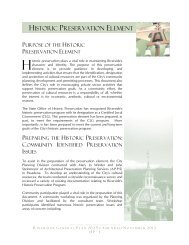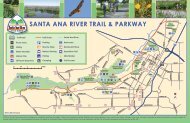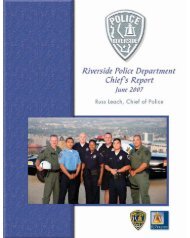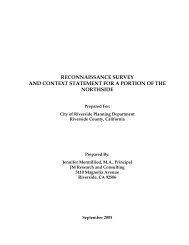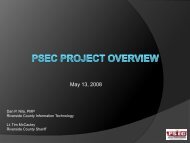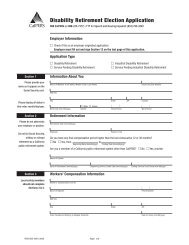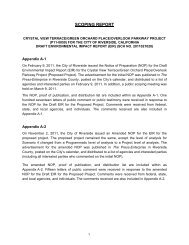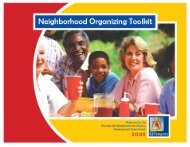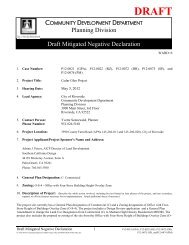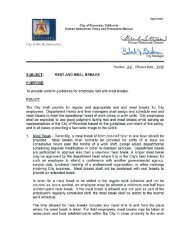Airport Master Plan - City of Riverside
Airport Master Plan - City of Riverside
Airport Master Plan - City of Riverside
You also want an ePaper? Increase the reach of your titles
YUMPU automatically turns print PDFs into web optimized ePapers that Google loves.
TABLE 2F<br />
Previous <strong>Airport</strong> Forecasts<br />
<strong>Riverside</strong> <strong>Airport</strong><br />
Previous <strong>Airport</strong> <strong>Master</strong> <strong>Plan</strong> (1998)<br />
Demand Category Base Year (1998) 2005 2010 2015 2020<br />
Based Aircraft 184 190 199 208 216<br />
Itinerant Operations 39,397 46,500 52,300 58,600 65,500<br />
Local Operations 30,357 35,800 40,200 45,000 50,300<br />
Annual Operations 69,754 82,300 92,500 103,600 115,800<br />
Updated Forecasts (2002)<br />
Demand Category Base Year (2002) 2005 2010 2015 2020 2025<br />
Based Aircraft 240 277 319 363 413 468<br />
Itinerant Operations 44,975 49,390 53,090 57,130 61,510 66,070<br />
Local Operations 59149 66,130 69,330 73,030 76,630 80,730<br />
Annual Operations 104,124 115,520 122,420 130,160 138,140 146,800<br />
Source: 1999 <strong>Airport</strong> <strong>Master</strong> <strong>Plan</strong>; 2002 Aviation Forecasts.<br />
SERVICE AREA<br />
Defining a service area for an airport<br />
can be useful in the forecasting<br />
process. Once a general service area<br />
is identified, various statistical comparisons<br />
can be made for projecting<br />
aviation demand. For example, in rural<br />
areas, where there may be one<br />
general aviation airport in each county,<br />
the service area could reasonably<br />
be defined as the entire county. This<br />
would facilitate comparisons to county<br />
population and employment for forecasting<br />
purposes.<br />
In urban areas, where there are many<br />
general aviation airports, the definition<br />
<strong>of</strong> the service area is not as simple.<br />
Aircraft owners in urban areas<br />
have many more choices when it<br />
comes to basing their aircraft. The<br />
number one reason aircraft owners select<br />
an airport at which to base their<br />
aircraft is convenience to home or<br />
work. Other reasons may include the<br />
capability <strong>of</strong> the runway system, services<br />
available, availability <strong>of</strong> hangar<br />
space, etc. Therefore, the primary limiting<br />
factor to defining an airport<br />
service area is the proximity <strong>of</strong> other<br />
airports that provide a similar or<br />
greater level <strong>of</strong> service.<br />
The defined service area is developed<br />
for the purposes <strong>of</strong> identifying a geographic<br />
area from which to further develop<br />
aviation demand projections.<br />
The service area will generally<br />
represent where most, but not all,<br />
based aircraft will come from. It is not<br />
unusual for some based aircraft to be<br />
registered outside the county or even<br />
outside the state. Particularly in urban<br />
areas, service areas will likely<br />
overlap to some extent as well.<br />
The service area for <strong>Riverside</strong> <strong>Airport</strong><br />
is primarily limited by the proximity<br />
<strong>of</strong> other airports. To the west, Chino<br />
<strong>Airport</strong> is a full service general aviation<br />
facility. The airport supports<br />
three runways, the longest <strong>of</strong> which is<br />
7,000 feet. There are approximately<br />
947 based aircraft, <strong>of</strong> which 40 are jet<br />
aircraft. Three FBOs provide a full<br />
2-10



